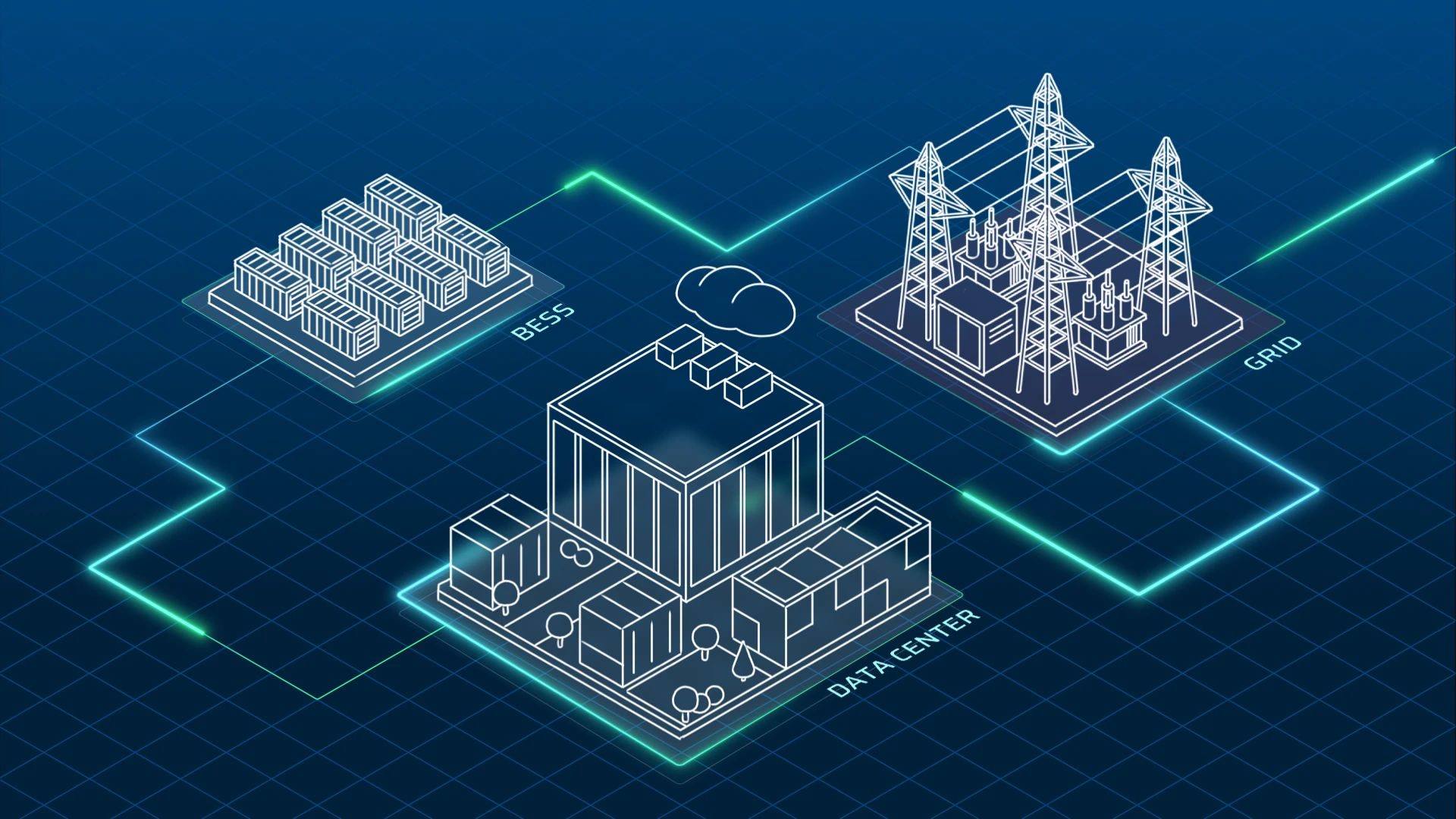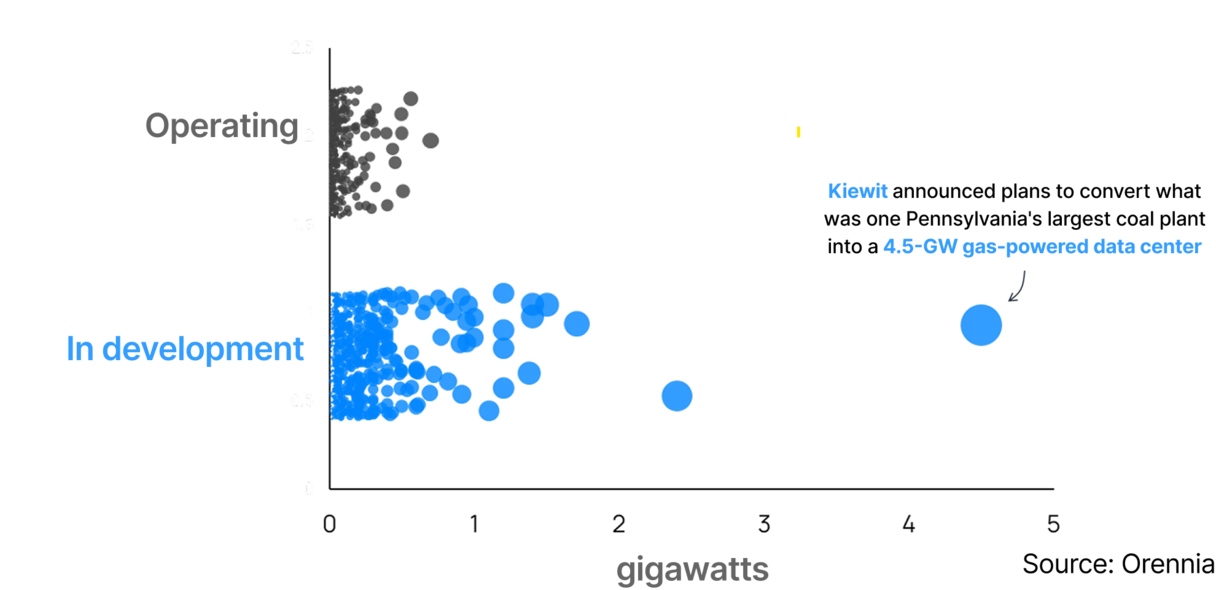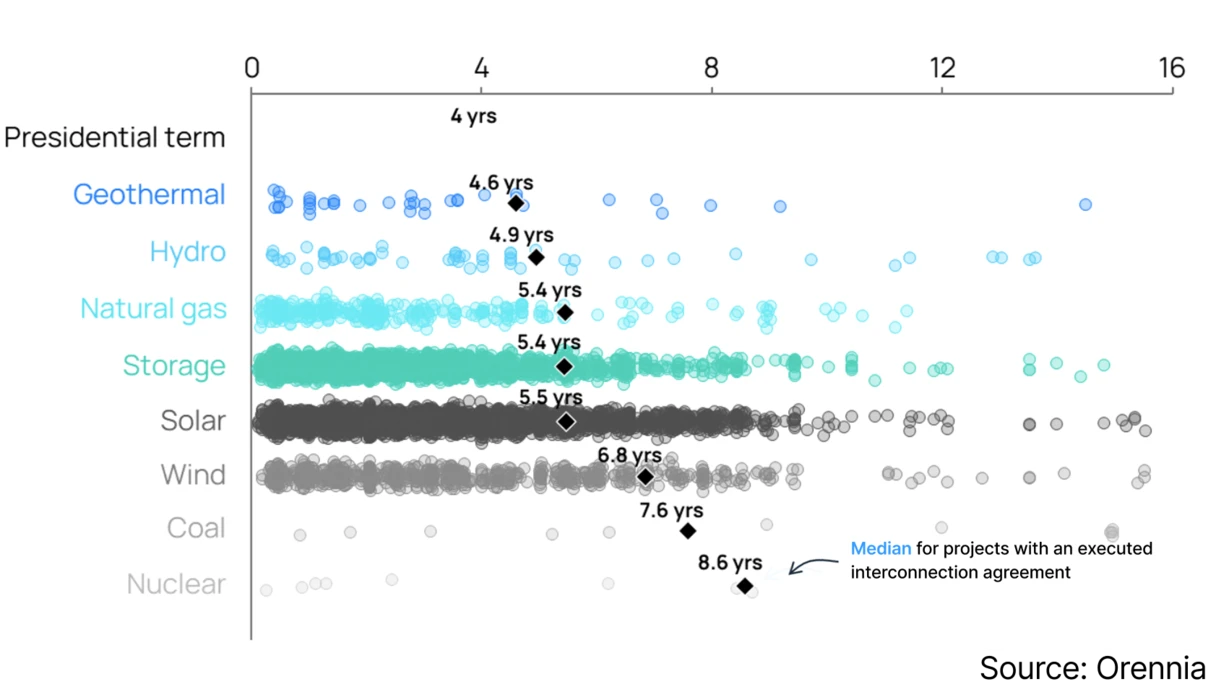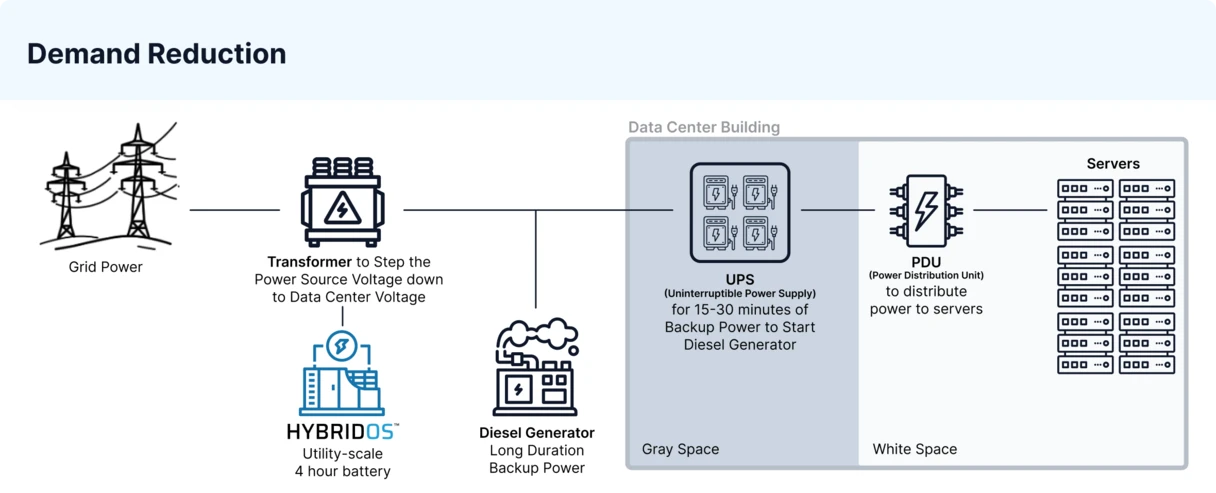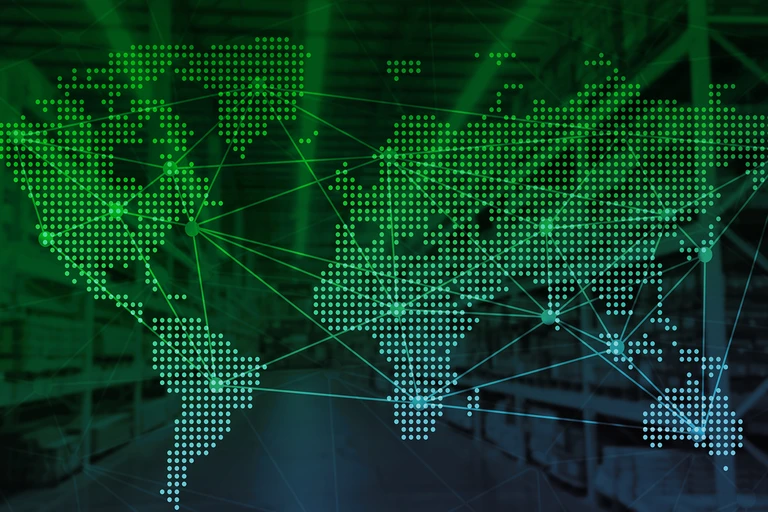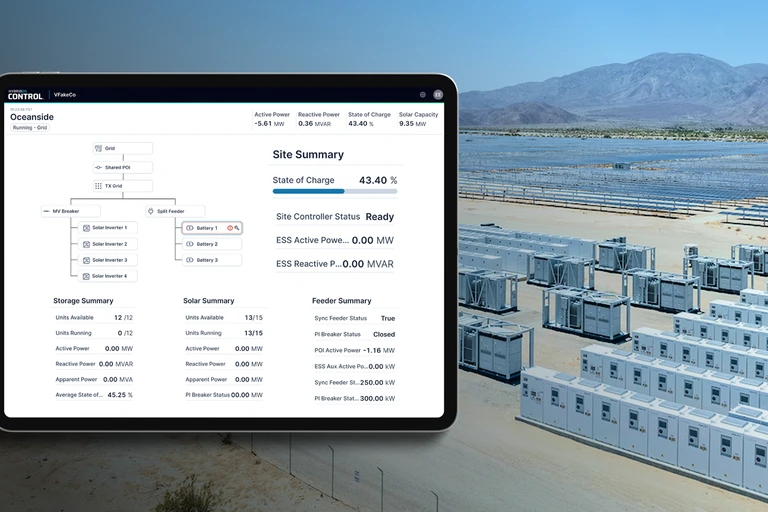In today’s energy landscape, one challenge has begun to overshadow all others for data center developers: speed to power.
As power demand skyrockets with the rise of AI, data centers are getting larger and more power dense. Meanwhile, the traditional path to grid interconnection has become increasingly slow and uncertain. This is where flexible interconnection—enabled by battery storage and intelligent software—can make a significant difference in accelerating AI growth without sacrificing grid stability.
Why interconnection speed matters
AI data centers are a primary driver of increasing electricity demand in key growth hotspots around the world. In the U.S., for instance, power demand is rising over 2% annually and expected to double by 2050. In Europe, power consumption from data centers is expected to nearly triple by 2030.
U.S. electricity demand (TWh) forecasted to double by 2050
Graph visualizing historical U.S. electricity demand and forecasted demand through 2050, including increasing demand from data centers, crypto mining, hydrogen, and EVs. Source: Orennia
Large language models require training and inference at unprecedented computational scales, which not only translates to an increase in the number of data centers needed, but also an increase in the size and energy density of each data center. New AI-driven data centers are being designed from 250 MW to over a gigawatt, compared to the 7 MW average of U.S data centers today. This massive shift in individual load scale creates new challenges for the grid and data centers.
Distribution of data center sizes across North America
Data visualization showing the power requirements of existing data centers compared to those in development in North America. Source: Orennia
With such large load requirements, the biggest hurdle data center developers face is interconnection. Across Germany, Spain, France, and Poland, more than 600 GW of wind and solar projects are stuck in the interconnection pipeline. And, the size of the U.S. interconnection queue is 10 times larger than it was 10 years ago, while staffing at U.S. ISOs and utilities has remained relatively unchanged. The result is a traffic jam of projects, with median wait times stretching from 4 to 8 years, depending on the region and project parameters. How can you get plugged into grid power faster?
Time spent in the interconnection queue, U.S. projects in years
Data visualization showing existing U.S. projects in the interconnection queue and median time spent in the queue, organized by energy resource type. Source: Orennia
For AI infrastructure to scale, data center developers need power now, not in 2030. Flexible interconnection is an emerging solution to accelerate data center speed-to-power, and batteries—especially those behind-the-meter—are uniquely suited to support it.
What is flexible interconnection—and how is it faster?
Flexible interconnection—the practice where data centers take a portion of their load as firm, utility-guaranteed power and the remainder as non-firm, interruptible capacity that can be curtailed when the grid is under stress—offers a way for project developers to connect to the grid more quickly. It challenges the conventional, binary approach to grid access: either you get 100% firm delivery, or you wait.
While not yet widely available, flexible interconnection is gaining traction among utilities, grid operators, and energy solution providers. In the U.S., National Grid is piloting flexible interconnections through an Active Resource Integration program in Texas, Pacific Gas & Electric introduced a Flex Connect pilot program for customers with controllable loads in California, and Southwest Power Pool recently proposed a Conditional High Impact Large Load (CHILL) service for 90-day interconnections. Software providers are tailoring solutions for this use case as well. Camus now offers FlexConnect, an advanced grid monitoring and forecasting tool to enable flexible interconnections for utilities, and Piq Energy is helping developers conduct their own grid studies to approach utilities with proactive solutions.
What does flexible interconnection mean for data centers?
This is where things get exciting. If data center developers accept slight curtailment (e.g., 0.5% of hours per year), they can unlock far more viable interconnection points for their projects and connect to the grid faster.
A Duke University study found that nearly 100 GW of large loads could be added to the existing grid with minimal impact if those loads are flexible. In Texas, for example, a 300 MW data center with zero load flexibility has about 800 feasible locations on the grid. If a developer embraces moderate curtailment, however, that number doubles to over 1,600 feasible locations and unlocks entire regions of opportunity, like West Texas.
Of course, for many data center developers, the idea of curtailing their energy even for a fraction of a percentage of the year is a non-starter. This is where on-site batteries come into play.
Batteries enable speed with flexible interconnection
Battery energy storage systems (BESS) make flexible interconnection feasible and more reliable for data centers. By placing utility-scale batteries behind the meter, a data center can switch over to stored power during grid peaks and meet curtailment requirements without sacrificing uptime or power quality.
Diagram illustrating utility-scale batteries deployed behind the meter to give data centers unprecedented control over their energy strategy.
Today’s utility-scale batteries can discharge for four or more hours, so with the right software stack and system configuration, a data center can remain fully operational while reducing its grid impact.
But why should an AI data center opt for software-controlled batteries when securing a flexible interconnection? Three compelling reasons, the first being deployment speed. BESS can be deployed faster than other energy resources, making flexible interconnections easier to attain. The second is asset integration—batteries will bolster and integrate with any on-site generation sources data centers may procure in the future, from solar and natural gas to nuclear and geothermal. And third is the total value stack batteries provide by solving multiple data center challenges, including cost control, reliable cutovers, and power quality.
What’s next? Flexible interconnection collaboration
The reality is, we cannot unlock the full value stack batteries bring to AI data centers—controlling cost variability, delivering reliable cutovers, and ensuring the utmost power quality—without the first step of interconnection.
At FlexGen, our hope is to bring utilities, regulators, data center developers, and battery software experts together to model flexible interconnection, create mechanisms to approve it, and then accelerate it throughout the country. By unlocking flexible interconnection, we can unlock the growth of AI data centers without jeopardizing the integrity of our grid.
Ready to collaborate on flexible interconnection? Let’s talk.
